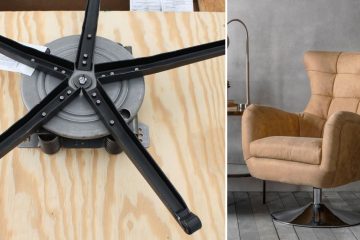Dealing with a wobbly chair can be quite frustrating. Whether it’s due to uneven legs, loose joints, or damaged hardware, a wobbling chair is annoying and poses a potential safety hazard. Fortunately, you don’t have to give up on your chair. This comprehensive guide will explore various methods for how to fix uneven chair legs and restore stability to your favorite seat.
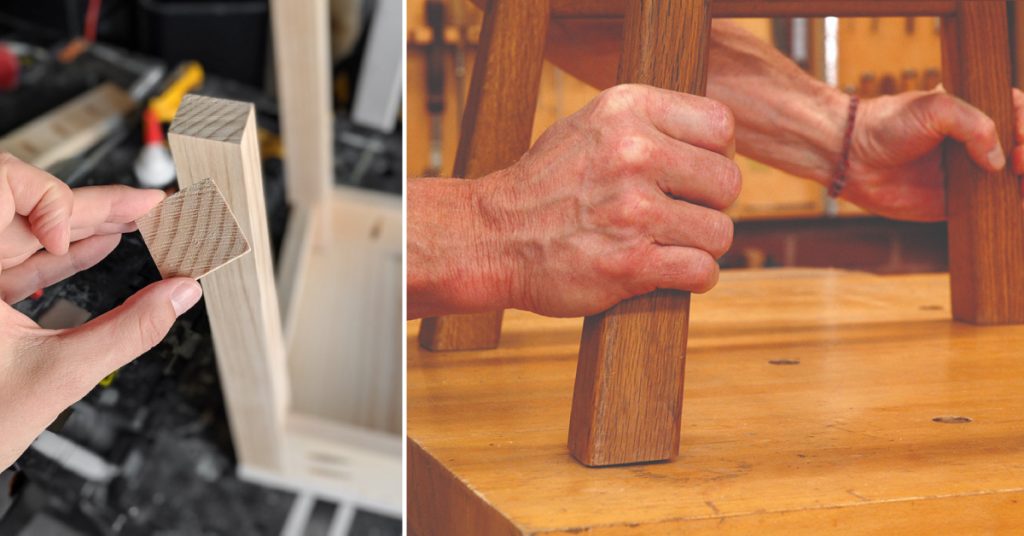
Understanding the Problem
Before we delve into the solutions, it’s essential to understand the underlying causes of uneven chair legs. In some cases, three legs may be longer than the fourth, resulting in an imbalance that causes the chair to rock back and forth. Additionally, temperature and humidity fluctuations can cause wood to expand and screws to loosen over time. Swivel-style chairs, such as office or gaming chairs, may also experience issues with their hardware, such as busted wheels, missing screws, or damaged seat plates.
4 Effective Methods for How to Fix Uneven Chair Legs
Here are four effective methods for how to fix uneven chair legs:
Method 1: Using Furniture Tacks
One simple and effective way to fix uneven chair legs is by using furniture tacks. These small accessories add a tiny bit of height to the shorter leg, helping to balance the chair. Here’s how you can do it:
- Measure the distance between the shortest leg and the floor.
- Hammer a furniture tack into the bottom of the shorter leg, adding height equal to the measured distance.
- Repeat the process for each leg that requires adjustment.
- Ensure the chair is stable and level after applying the furniture tacks.
Note: Furniture tacks can be found online or at your local home improvement store.
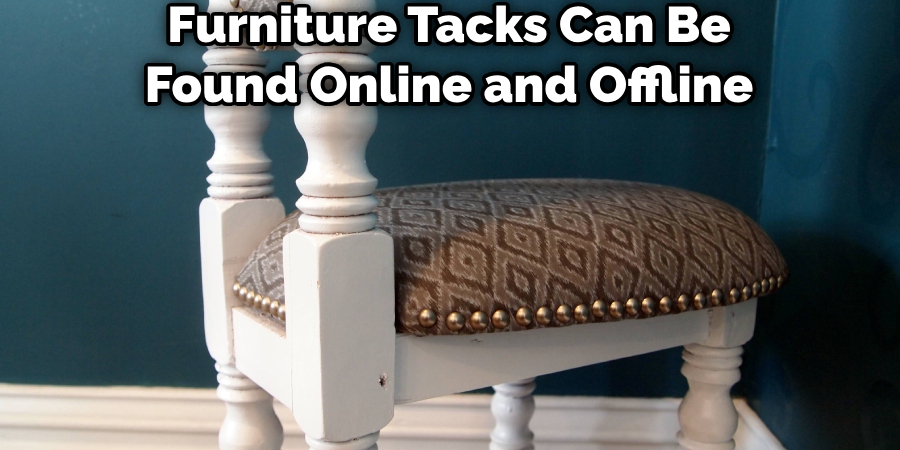
Method 2: Repairing Loose Joints
If the chair’s wobbliness is caused by loose joints, you can fix it by following these steps:
- Label the chair legs and bottom with masking tape to keep track of their positions.
- Carefully remove the chair legs from their joints.
- Inspect the circular, open wood joints along the bottom of the chair seat.
- Use a chisel to remove any dried glue or debris from the joints.
- Sand away any old glue residue with 120-grit sandpaper.
- Apply wood glue to the inside of the joints and spread it evenly with a small paintbrush.
- Apply a thin layer of wood glue to the exposed ends of the chair legs.
- Reattach the chair legs to their respective joints and use a rubber mallet to secure them in place.
- Place a heavy object on the seat to apply pressure while the glue dries.
- Allow the chair to dry and cure for several days before using it again.
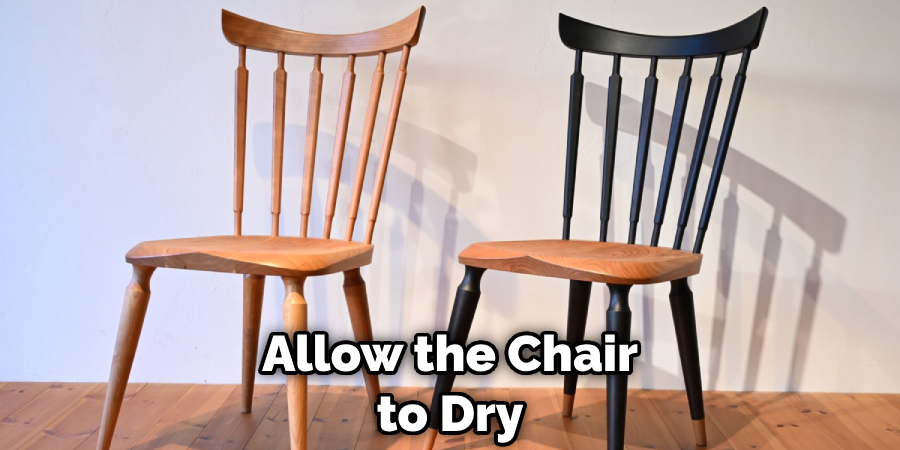
Method 3: Fixing Upholstered Chairs
For upholstered chairs, the wobbling issue may stem from loose screws or damaged upholstery. Here’s how to fix it:
- Flip the chair over and use an electric drill to remove any screws connected to the upholstery.
- Gently remove the cushion from the top of the seat.
- Inspect the back legs and identify the wooden dowels connecting them to the central seat.
- Apply wood glue to the dowels to strengthen the connection.
- Tap the chair legs with a rubber mallet to ensure the dowels are securely in place.
- Use a clamp to hold the chair in position while the glue dries.
- Allow the chair to dry completely before reinstalling the upholstery and screws.
Method 4: Fixing Swivel-Style Chairs
Swivel-style chairs, such as office or gaming chairs, may require specific fixes due to their unique design. Here are some steps to address common issues:
- Flip the chair over and inspect each wheel.
- If any wheels are bent or damaged, remove and replace them.
- If the chair is leaning to one side, check for any missing screws. Replace them with suitable replacements if needed.
- Examine the metal plate attached to the chair’s seat. Tighten any loose screws or bolts and replace any damaged components.
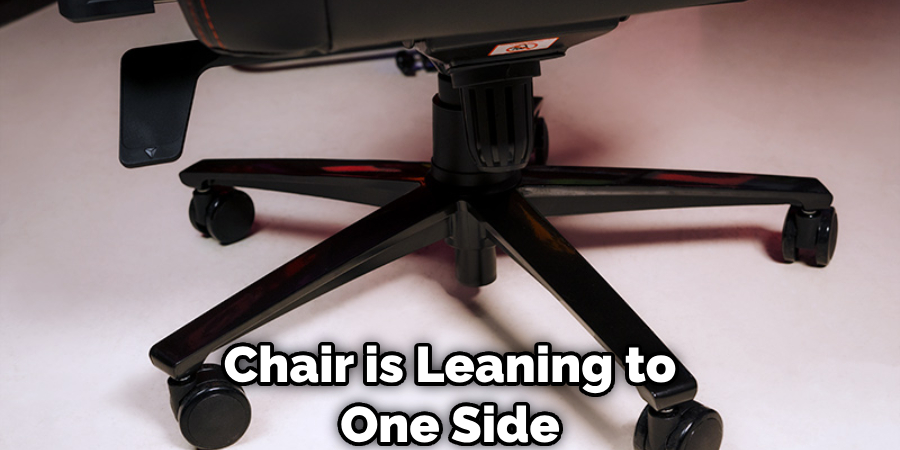
FAQs About How to Fix Uneven Chair Legs
Why is My Chair Not Level?
There could be several reasons why your chair is not level. It could be due to loose fasteners, uneven legs, an uneven floor surface, or even structural damage. To address the issue effectively, it’s important to diagnose the specific cause and take appropriate action.
What Causes Uneven Chair Legs?
Uneven chair legs can be caused by a variety of factors. Loose fasteners, uneven legs, an uneven floor surface, or structural damage are some of the most common reasons why a chair is not level. Sometimes, chairs can have one leg that is shorter than the others, causing it to rock back and forth. This problem can be solved by applying a dollop of glue to the shorter leg using an inexpensive glue gun. Adjusting the legs can also be a solution, but if the floor surface is uneven, it may only work in one spot. It is important to diagnose the specific cause of the problem to address it effectively.
Can Chair Legs Be Changed?
Yes, chair legs can be changed. It is a relatively easy and cost-effective way to enhance the design and character of a chair. If you come across a chair with legs that you don’t like or that are damaged, you have the option to replace them. To change chair legs, you can remove the existing legs by using a hammer or screwdriver to remove any screws or nails holding them in place. Then, you can find replacement legs at a woodwork store, hardware store, or online. Make sure the new legs are the right fit by placing them under the chair before attaching them permanently. Finally, attach the new legs using screws and conceal any holes with wood putty.
Conclusion
Fixing uneven chair legs is a manageable task that can save you from the annoyance of a wobbly seat. By following the methods outlined in this guide, you can restore stability and enjoy your chair for years to come. Remember to choose the appropriate method based on the specific issue your chair is facing. With a little effort and the right tools, you can transform your wobbly chair into a sturdy and reliable piece of furniture.

